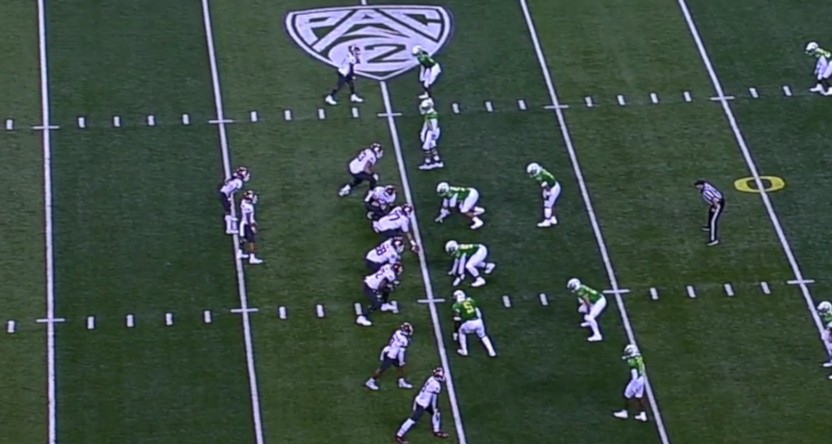Sports broadcasts often come under criticism for things that are conscious decisions, from camera angles to scorebugs and graphics. What’s more unusual is when a broadcast just looks off and no one can quite figure out why. That happened several times with “fuzzy-looking” ESPN Pac-12 football broadcasts last season, including the Washington State-Oregon one from Nov. 13 seen above. Here’s how Jon Wilner of The Mercury News showed that side-by-side with a Pac-12 Networks broadcast last year:
Here are P12 Network and ESPN pictures side by side pic.twitter.com/lGxlZ1HFyg
— Jon Wilner (@wilnerhotline) November 14, 2021
ESPN eventually upgraded the older equipment in the truck that many cited as the source of the issue. But even that didn’t fully fix the problems. John Canzano, who was all over this issue last year, now writes that ESPN has apparently identified the real root issue, and it was about different brands of technology that didn’t play nicely together:
The issue, per an engineer who worked to solve it, was compatibility between the Sony-manufactured cameras being used to capture the action on the field and the non-Sony Camera Control Unit (CCU) in the CSP-owned truck.
The camera function (framing and focus) at a football game is controlled by the camera operator. The color balance, shutter speed, hue and other technical aspects are controlled remotely by an operator in the truck stationed at the CCU. That team member is charged with working with somewhere between six and 12 cameras, and has the task of making the shots from all those different cameras look consistent.
“Take notice of the differences in the picture on your screen early in the game this season,” a veteran CCU operator explained to me. “You’ll typically see some variances in color and hue of the grass between the different cameras in the first few minutes of the game, or as the sun sets, and the lighting in the stadium changes. But after the first series or so, a good CCU operator fixes the variances between all the cameras and the viewer never notices it again.”
Canzano goes on to write that ESPN has confirmed on the record they’ll use a new vendor this year, and production sources told him this year’s trucks will all have Sony CCUs.
Bill Hofheimer, senior director of communications for ESPN, told me on Wednesday morning, “We took a look at this in the offseason and will be using a new vendor this fall.”
…A second source who works in the remote trucks on the game-production side for ESPN told me that the trucks that will be used this season are now all wired with Sony CCU’s.
“Everything this year is more standard across the board, tech-wise,” the source said.
As Canzano notes, it’s a particularly important season for ESPN to produce high-quality Pac-12 broadcasts. In the wake of the Big Ten going with Fox, CBS, and NBC and moving away from ESPN, ESPN is largely seen to be the clubhouse leader for the major portion (or potentially even all) of the Pac-12’s media rights in the next contract (which will begin with the 2024-25 season, but the negotiations are already underway). While broadcast quality is usually not a major factor in rights deals these days (most networks are producing similar high-quality broadcasts, and the amount of money they’re offering is usually more dissimilar and a bigger part of a deal), another year of Pac-12 fans roasting poor-quality pictures on conference games broadcast on ESPN certainly wouldn’t be great for the Worldwide Leader’s hopes of landing a Pac-12 deal.
As with many things, though, the proof will be in the pudding. If the more standardized truck setups that pair nicely with the cameras being used pay off and eliminate the fuzziness issue, that’s great. But ESPN already thought they had solved this once with the late-season upgrade to newer equipment. Hopefully this particular solution works out a little better.
[JohnCanzano.com; top screencap from Jon Wilner last November]







